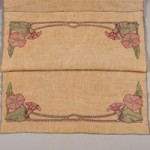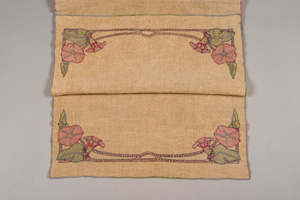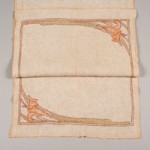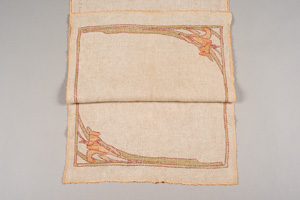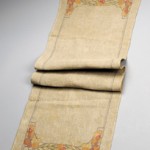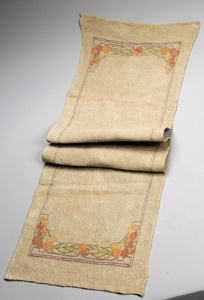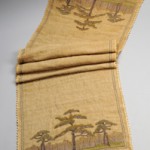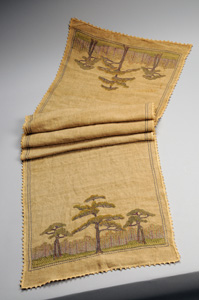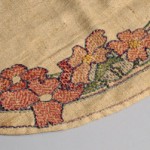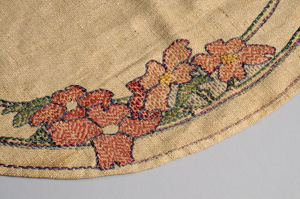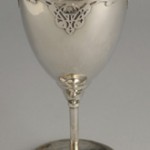Newcomb Textiles
In 1902, embroidery, identified as Art Needlework, was introduced to the curriculum. The fiber-arts class was under the direction of drawing and painting professor Gertrude Roberts Smith. Adhering to the same standards and concepts of design as the pottery, the decorators used regional flora and fauna as their source of imagery.
Linen and native cottons were used as bases for the embroidery, with the designs executed in French and Persian silk threads. The floss was colored with Oriental dyes for better resistance to fading, and the stitches were kept simple: satin, outline, running, darning, and buttonhole. The desired effect was similar to Pointillist paintings, with dots of color organized in patterns forming an image. The pieces approved for sale were marked on the back with the sewn initials “NTN” (Newcomb Textiles and Needlework). Newcomb textiles were highly popular and second only to the pottery in sales.

